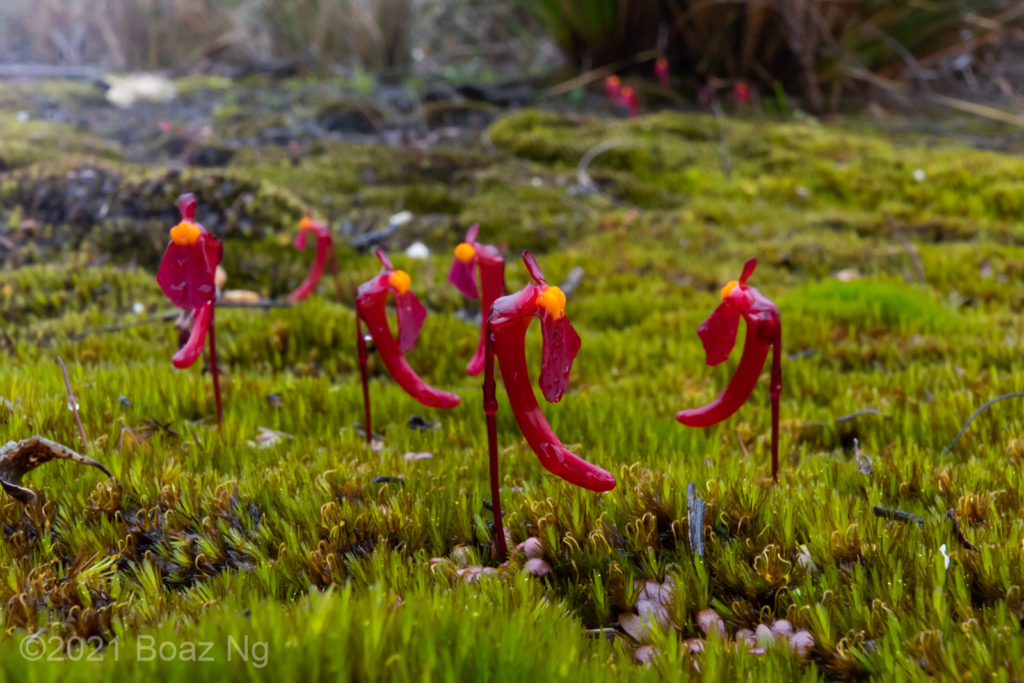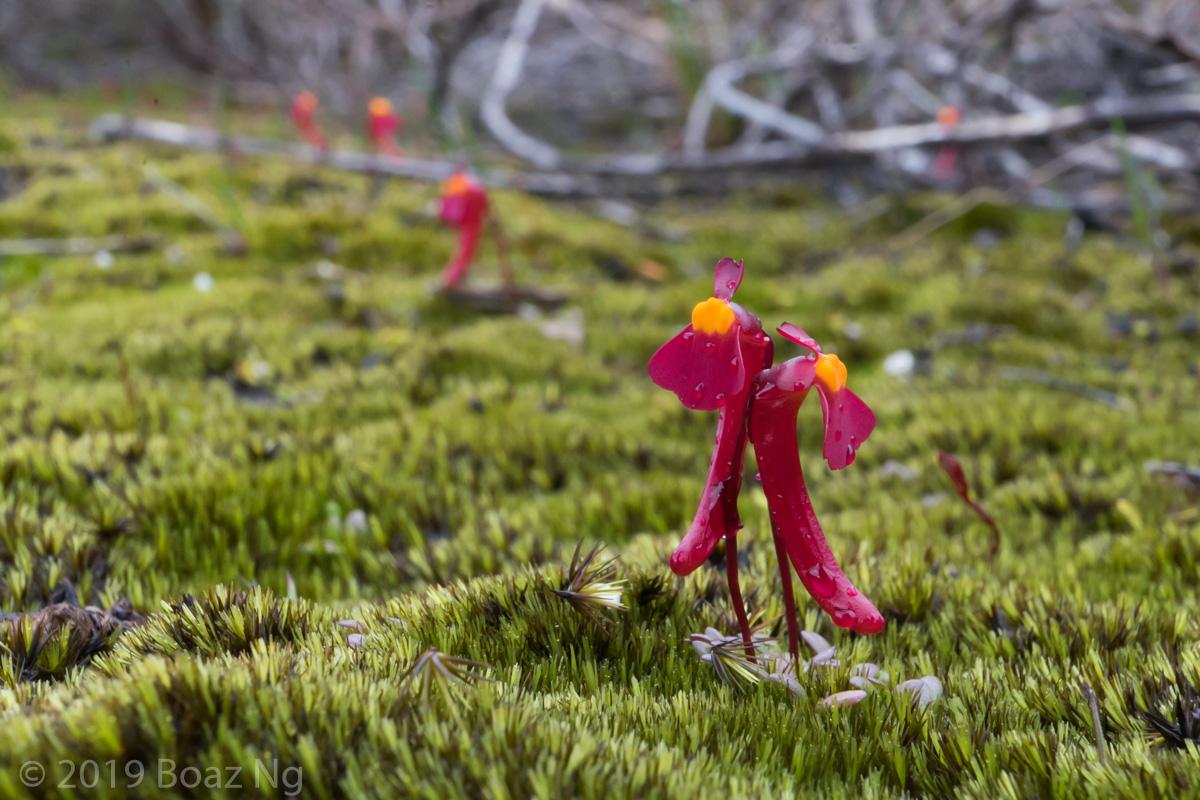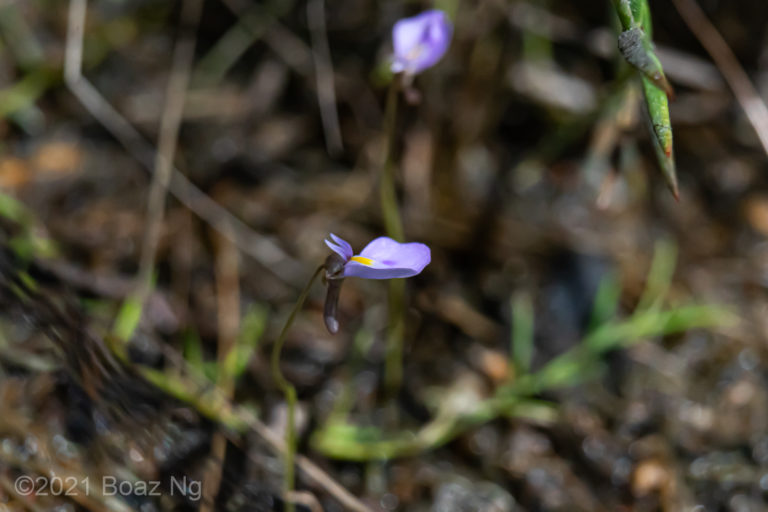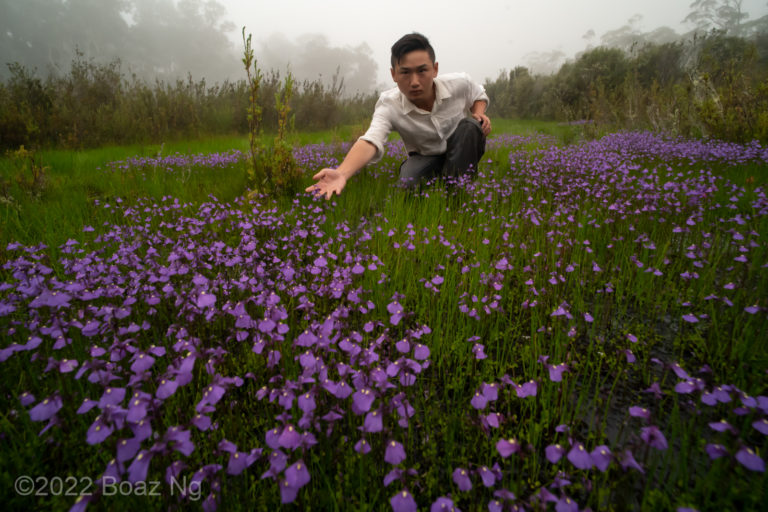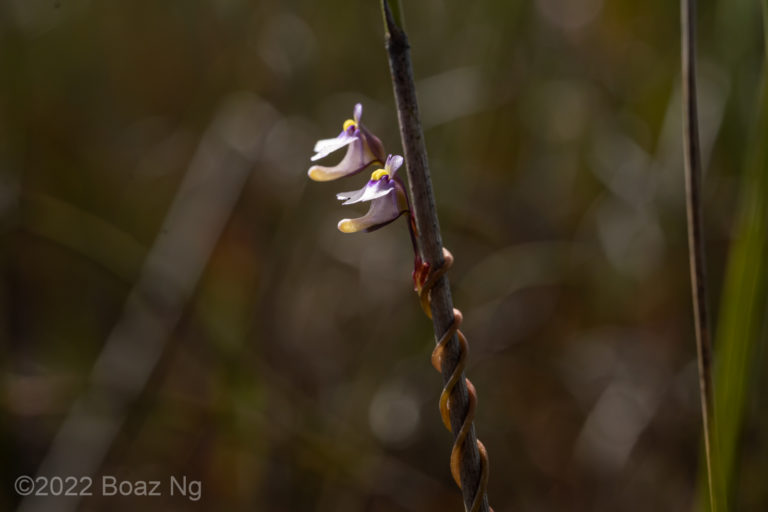Utricularia menziesii is a distinctive terrestrial species of bladderwort endemic to south west Western Australia. The plants grow large red blooms with a long underhanging corolla spur that is remeniscent of the coat tails of colonial British soldiers from which their common name the ‘red coat’ is derived.
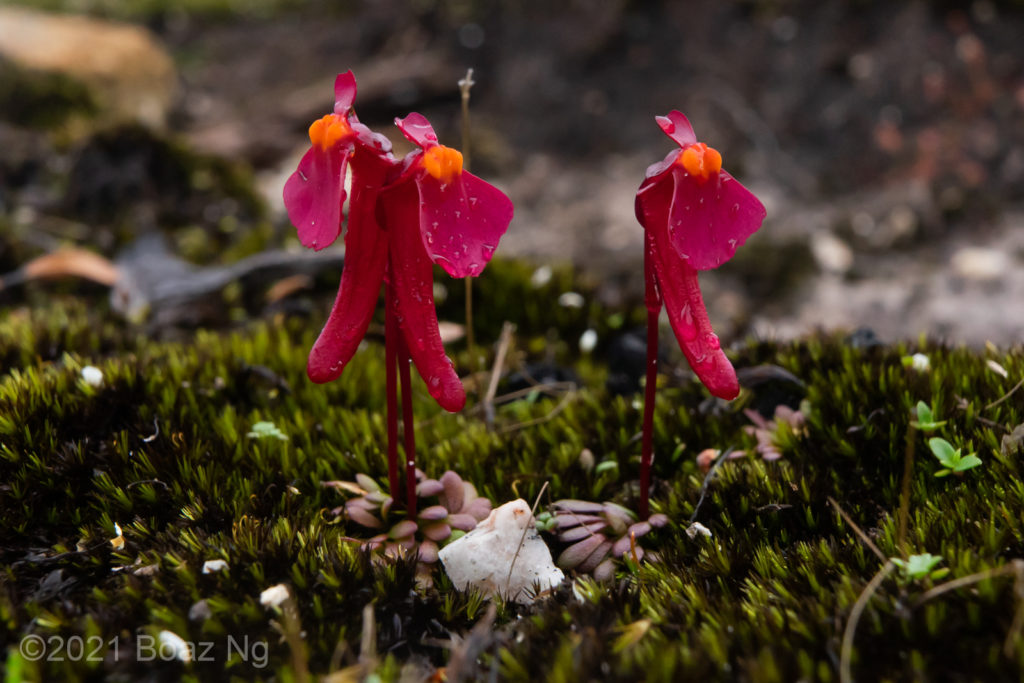
The species is notable for its red petals, a colour which is unusual in the genus. The upper corolla lip is notched, with two or three lobes. The lower corolla lip is flared and compressed from a front-on perspective. The palate in the middle of the petal is usually yellow or orange, depending on locale. The corolla spur is very long, roughly twice the length of the lower lip. The leaves of the species are numerous, emerging from a central growth point and overlapping at the surface. Subterranean traps are borne under the surface.
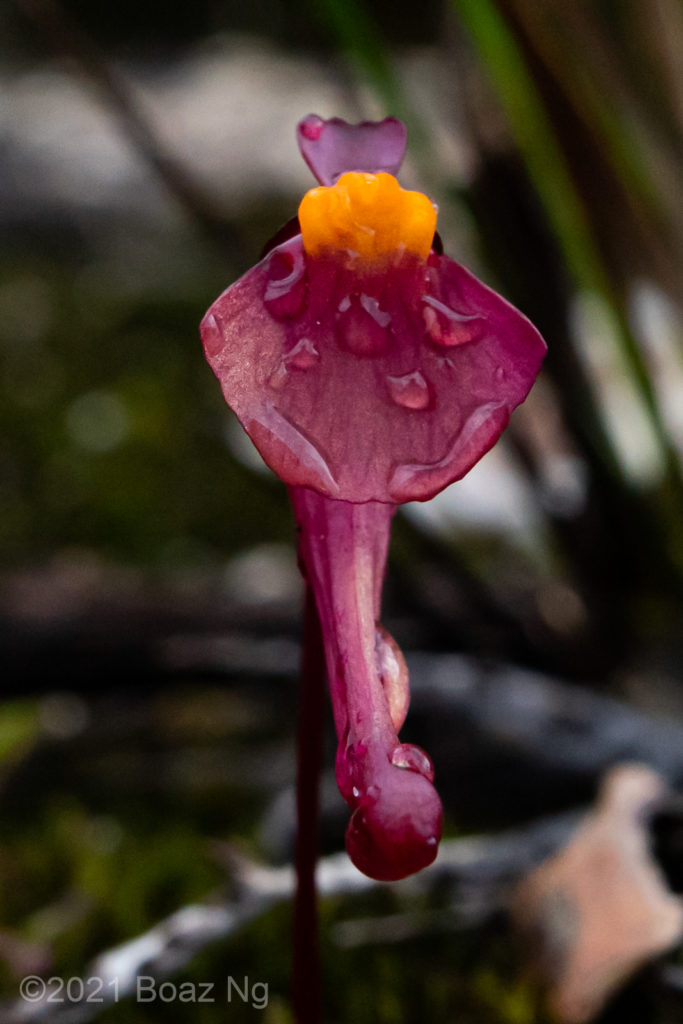
Utricularia menziesii is noteworthy within the genus for its tuberous habit. Its habitat in summer is bone dry, and the species survives as a perennial by forming a dormant corm at the end of the growing season. It is also unusually pollinated by the honeyeater bird, which uses its long beak to reach into the nectary spur.
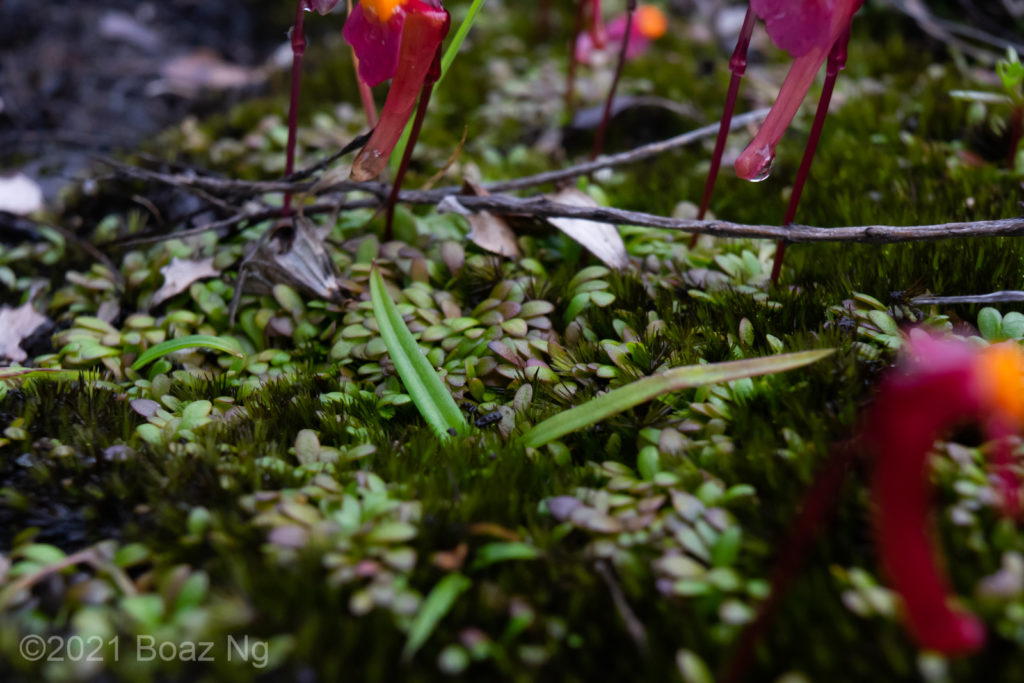
The species grows in winter-wet coastal locations in the south east of Western Australia. It occupies a range of niches, including sandy swamp flats, the edge of wet channels, moss aprons atop granite surfaces and loamy depressions in granite outcrops. These habitats are only wet during the cooler months of the year.
